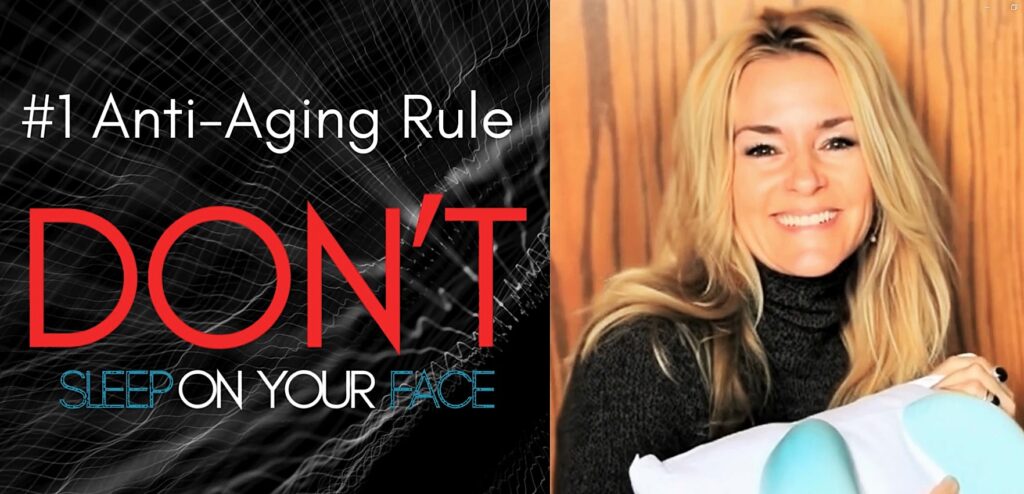
Sleep Position Matters When It Comes to Permanent Wrinkles. That’s why the #1 Anti-Aging Rule is: Don’t sleep on your face.
Even with all the advancements in medical aesthetics and therapies like NAD+ IV and IM, nothing will preserve your skin’s youthful appearance like avoiding face-down sleeping. From facial distortion to jowls, under-eye bags, and deep sleep lines, keeping pressure off your face prevents lasting damage—and ensures that biostimulators, dermal fillers, other injectables, and even surgeries can do their job and deliver lasting results.
Learn more about how The Back to Beauty™ Anti-Wrinkle Head Cradle (Beauty Pillow) Works or Shop Now.
Full Article Overview:
Sleep Wrinkles from Mechanical Pressure
A peer-reviewed study in the Aesthetic Surgery Journal found that sleeping on your side or stomach applies compression, tension, and shear forces to the face. These forces lead to “sleep wrinkles”—lines formed by mechanical distortion over repeated nights—which worsen with age as skin thins and loses elasticity. Unlike expression wrinkles, these cannot be treated with neurotoxins like Botox, though fillers may help temporarily. One effective prevention strategy is sleeping on your back, with a specialty pillow (source).
Researchers also noted that as people age, they shift less during the night—from 27 times to about 16—leading to prolonged pressure on the same facial areas.
Visualizing and Studying Sleep Wrinkles
In a study using a transparent air-filled PVC pillow and fluorescent imaging, researchers observed real-time facial deformation during sleep—such as crow’s feet, lines around the mouth, forehead flattening, and exaggerated nasolabial folds (source).
Another trial found that an anti-wrinkle pillow design reduced wrinkle density by 12% in just 28 days, showing how sleep position modification can make a measurable difference (source).
Broader Context and Recommendations
Dermatologists widely agree that side and stomach sleeping contribute to wrinkle formation on the face, neck, and chest over time. Sleeping on your back remains the best strategy to limit this type of mechanical aging (source).
Sleep wrinkles can appear temporarily in younger skin but often become permanent as elasticity decreases with age (source).